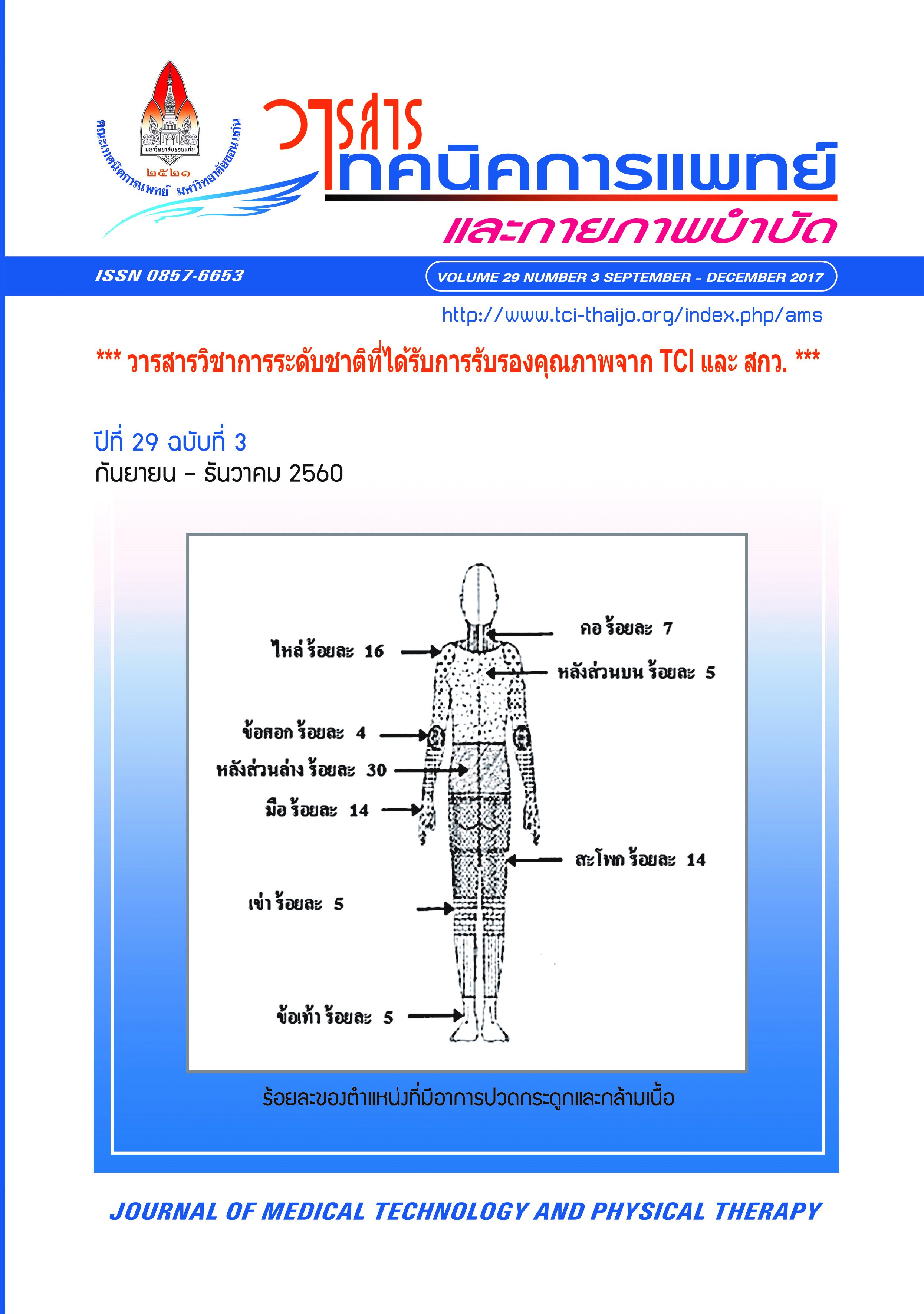Longitudinal assessments of gross motor development in orphaned infants
Main Article Content
Abstract
Longitudinal assessments of gross motor development during first year can obviously reveal the pattern of the individuals’ gross motor development. Typically-development children show instability of development depending on biological factors, movement experience and contextual factors during movement. At present, there is no data investigating gross motor development via a longitudinal observation while infants are living in the orphanages. This study therefore aimed to longitudinally assess the pattern of gross motor development of orphaned infants. We assessed the gross motor development using the Alberta Infant Motor Scale (AIMS) in 10 participants aged less than 6 months and 6 participants aged more than 6 months. Data analyses were performed using descriptive statistics. Results were found that both groups of infants in orphanage displayed instability of gross motor percentile ranks with no systematic pattern of change across infants. Sixty percent of infants aged less than 6 months and 66.67 % of those aged more than 6 months had less variation of gross motor development. These children had scores below the 50th percentile. In addition, infants who had at least once motor development percentile below designated cut-off were premature birth or low birth weight or having biological underlying conditions. We conclude that the gross motor development of infants in orphanage showed less instability of gross motor percentile. This may be due to restricted environment in orphanage and biological risk factors of individual infants. Longitudinal assessments of gross motor development could monitor risk of delayed motor development of infants in orphanage.


